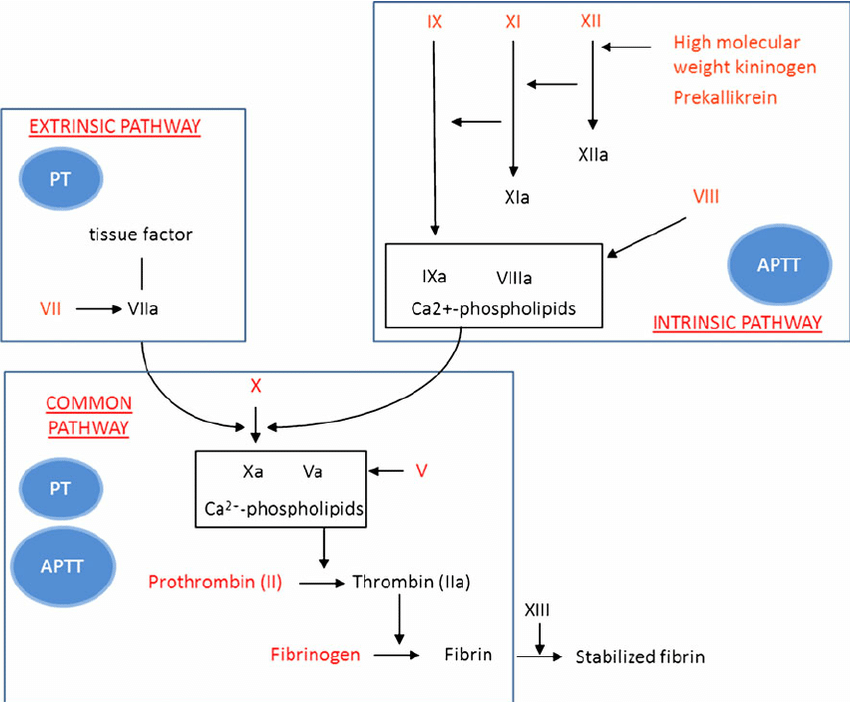Normal homeostasis exhibits a balance between pro-coagulant and anticoagulant systems. The coagulation cascade results in the formation of soluble fibrinogen which is then converted to insoluble fibrin to form a stable clot. It can occur by the extrinsic or intrinsic pathways. The extrinsic pathway is activated by tissue factor. Tissue factor (TF) is exposed when endothelial injury occurs, it then activates factor VII to initiate extrinsic pathway. Increased expression of TF occurs in sepsis, malignancies, ruptured atheromatous plaques etc. The intrinsic or contact pathway is initiated by activation of factor XII in the presence of high-molecular-weight kininogen (HMWK) and plasma prekallikrein (PK). The intrinsic pathway does not contribute significantly to hemostasis in vivo. Ex vivo activation of the contact pathway occurs during hemodialysis, cardiopulmonary bypass, and extracorporeal membrane oxygenation (ECMO), where blood comes into contact with artificial surfaces such as glass. Both pathways can be activated in pathological conditions like infections. Before formation of fibrin clot, platelet plug forms which temporarily stops bleeding.

Normally occurring anti-thrombogenic factors are plasminogen, tissue plasminogen activator (tPA), proteins C and S,thrombomodulin and antithrombin. Plasmin which is derived from plasminogen, dissolves the fibrin clot into fibrin degradation products (FDPs). tPA is released from endothelial tissues and it catalyzes the conversion of plasminogen to plasmin. The release of t-PA is stimulated by tissue occlusion, thrombin, epinephrine, vasopressin and strenuous exercise. D dimers are produced by digestion of cross linked fibrin and are specific indicators of fibrinolysis. D dimers will be positive in DIC and deep vein thrombosis. Plasminogen activator inhibitor inhibits tPA; alpha 2 antiplasmin and alpha 2 macroglobulin inhibit plasmin while TAFI (thrombin activatable fibrinolysis inhibitor) decreases the affinity of plasminogen to fibrin and activates anti-trypsin to breakdown plasmin.
Factors II, VII, IX, X and protein C and S are vitamin K dependent factors. Protein C inactivates Factors V and VIII while protein S is a cofactor for protein C.
Sign up for free to take 2 quiz questions on this topic